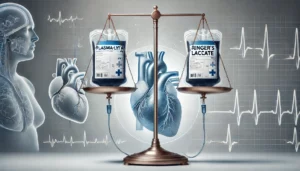
Efficacy and Safety of the Blood-Based Cardioplegia Solution Huaxi-1 in Cardiopulmonary Bypass Surgery: Protocol for a Multicentre Randomised Controlled Trial
This study evaluates the safety and efficacy of the Huaxi-1 blood-based cardioplegia solution compared to the widely used HTK solution in cardiopulmonary bypass surgery. A randomized, multicenter trial involving 160 adult patients across four hospitals in China will measure myocardial injury markers, cardiac function, and post-surgical recovery. The goal is to establish Huaxi-1’s viability as a standardized cardioplegia solution for improved myocardial protection.










